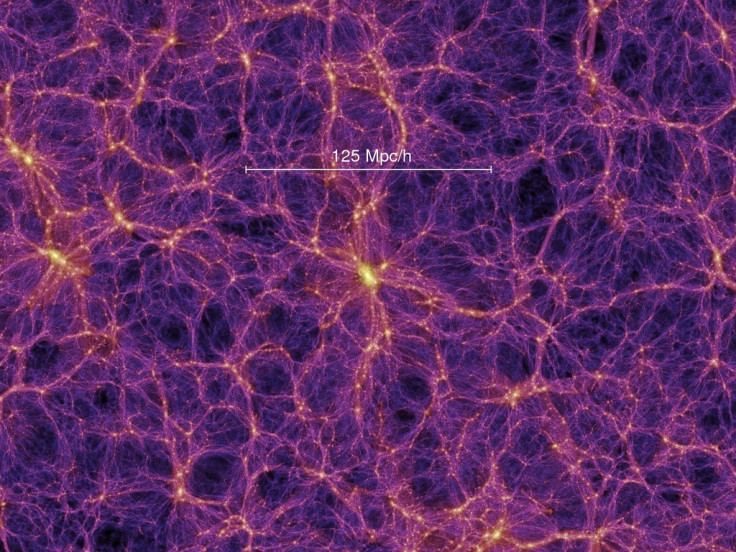Early Universe: Cosmic Web Turned on Galaxy Formation

The cosmic web, made largely of dark matter, played an important role in the evolution of galaxies in the early universe, says a team of astronomers at the University of California, Riverside.
The study, based on observations of the Universe when it was half its present age shows that thread-like "filaments" in the cosmic web, accelerated the formation of galaxies by increasing the gravitational interaction between galaxies.
Galaxies are organised even today in a largescale network referred to as the cosmic web. This web has dense regions made up of galaxy clusters and groups and sparsely populated regions with the thread-like filaments linking dense regions.
Galaxies in dense regions are slow in producing stars compared to the less dense ones. While this has been understood, the role of filaments and the cosmic web in the early universe was a mystery.
Using data on a giant section of the cosmic web revealed in two big cosmological surveys -- COSMOS and HiZELS -- as well as data from several telescopes, the team applied a new computational method to identify the filaments.
The result showed that in the early universe, galaxy evolution was accelerated in the filaments.
With increases in gravitational interaction between galaxies in the filaments, star formation was enhanced.
This process in filaments continues even today, say the astronomers.
The filaments are regions where galaxies are 'pre-processed' and either accelerated in their evolution or funnelled towards clusters, where they likely end up as dead galaxies.
The study was published in the Astrophysical Journal.
© Copyright IBTimes 2025. All rights reserved.





















